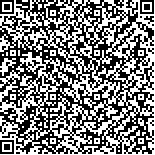蔡丽颖,孙国欣,蔡丽坤,等.呼吸肌镜像阈值负荷训练对脑出血患者呼吸肌疲劳的影响[J].中华物理医学与康复杂志,2025,47(5):403-407
扫码阅读全文

|
| 呼吸肌镜像阈值负荷训练对脑出血患者呼吸肌疲劳的影响 |
|
| |
| DOI:10.3760/cma.j.cn421666-20230909-00712 |
| 中文关键词: 镜像神经元 脑出血 呼吸肌疲劳 呼吸肌训练 呼吸功能 |
| 英文关键词: Mirror neurons Cerebral hemorrhage Respiratory muscle fatigue Respiratory muscle training Respiration Threshold load training |
| 基金项目:河北省重点研发计划项目(22377758D) |
|
| 摘要点击次数: 1802 |
| 全文下载次数: 1479 |
| 中文摘要: |
| 目的 观察镜像阈值负荷训练对脑出血后呼吸肌疲劳患者呼吸功能的影响。 方法 采用随机数字表法将符合入选和排除标准脑出血呼吸肌疲劳患者50例分为观察组和对照组,每组患者25例。2组患者均接受常规康复训练,对照组在此基础上增加呼吸肌阈值负荷训练,观察组患者则增加呼吸肌镜像阈值负荷训练。呼吸肌镜像阈值负荷训练每日上、下午各训练1次,每周训练5 d,连续训练4周。于治疗前和治疗1、2、3、4周后检测2组患者的呼吸肌力[最大吸气压(MIP)和最大呼气压(MEP)];并于治疗前和治疗4周后,评定2组患者的肺功能[第一秒用力呼气量(FEV1)和25%用力呼气量(FEF25)]、最长声时(MPT)和呼吸频率(RR)。 结果 治疗1、2、3、4周后,2组患者的MIP值和MEP值均显著优于组内治疗前,差异均有统计学意义(P<0.05);治疗4周后,观察组患者的MIP值和MEP值分别为(43.83±5.47)cmH2O和(56.96±7.52)cmH2O,均显著优于对照组,差异有统计学意义(P<0.05)。治疗4周后,2组患者的FEV1、FEF25、MPT和RR值较组内治疗前均显著改善(P<0.05),且观察组患者FEV1、FEF25和RR值均显著优于对照组(P<0.05)。 结论 呼吸肌镜像阈值负荷训练,可显著改善脑出血后呼吸肌疲劳患者的呼吸功能,且疗效优于呼吸肌阈值负荷训练。 |
| 英文摘要: |
| Objective To observe the effect of mirror threshold load training on respiration of persons with respiratory muscle fatigue after a cerebral hemorrhage. Methods Fifty cerebral hemorrhage patients with respiratory muscle fatigue were randomly divided into an observation group and a control group, each of 25. In addition to routine rehabilitation training, the control group was given threshold load training of the respiratory muscles, while the observation group was provided with mirror threshold load training, twice a day in the morning and afternoon, 5 days a week for 4 weeks. Before the experiment and after 1, 2, 3 and 4 weeks of the treatment, everyone′s maximum inspiratory pressure (MIP) and maximum expiratory pressure (MEP) was recorded. Before and after the 4 weeks forced expiration volume in the first second (FEV1) was measured along with 25% of the forced expiration volume (FEF25), maximum sound time (MPT) and respiration rate (RR). Results At each time point the MIP and MEP values of both groups were significantly better than those before the treatment. After 4 weeks the average MIP and MEP values of the observation group were significantly better than those of the control group. And after 4 weeks the FEV1, FEF25, MPT and RR values of both groups had also improved significantly, on average. All of the observation group′s averages except MPT were then significantly better than the control group′s averages. Conclusions Mirror threshold load training of the respiratory muscles can significantly improve the respiration of persons with respiratory muscle fatigue after a cerebral hemorrhage. It is more effective than respiratory muscle threshold load training. |
|
查看全文
查看/发表评论 下载PDF阅读器 |
| 关闭 |